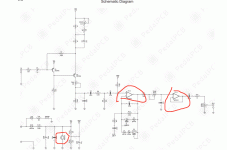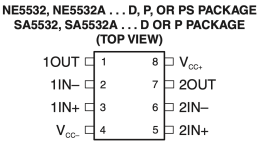DUMPYDUMPER
New member
I'm trying to understand schematics more & this 1 is confusing me. its for the 5lb bag fuzz pedal.
I'm confused on what this sqaure symbol with + & - means/ what is would be called in kicad. Can anyone explain?
also why do this schematic show 2 symbols for an ic when the pcb only has 1? i understand that its showing the different pins of the ic but would that create 2 footprints in the pcb editor? any help would be great! sorry very new to this & trying to understand more.
al
I'm confused on what this sqaure symbol with + & - means/ what is would be called in kicad. Can anyone explain?
also why do this schematic show 2 symbols for an ic when the pcb only has 1? i understand that its showing the different pins of the ic but would that create 2 footprints in the pcb editor? any help would be great! sorry very new to this & trying to understand more.
al





